Painted Churches of Texas: St Mary, High Hill
/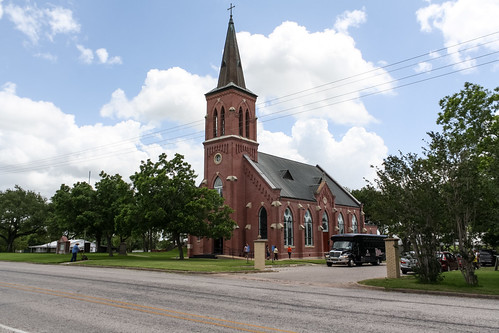
Many consider the church at High Hill to be the grande dame of the Central Texas painted churches. Fifteen church with Decorative Interior Paintings around the state constitute a National Register Thematic Nomination listed in 1983. These rural churches were the work of immigrants from Germany and Eastern Europe. In building their churches, the settlers combined vernacular wooden structures with the contemporary Gothic Revival; but their most distinctive features are the interior paintings.
The German and Czech Moravian community built and dedicated their church to the Nativity of Mary between 1902 and 1906. Around 1912, Ferdinand Stockert and Herman Kern completed the interior paintings. Both were German artists who formed a partner in San Antonio in 1911. St Mary, High Hill was one of their first joint commissions and the first collaboration with Leo Diehlmann.

The church at High Hill showcases a wide range of painting techniques, such as marbling on the wooden columns:

and stenciling and lettering in the narthex:
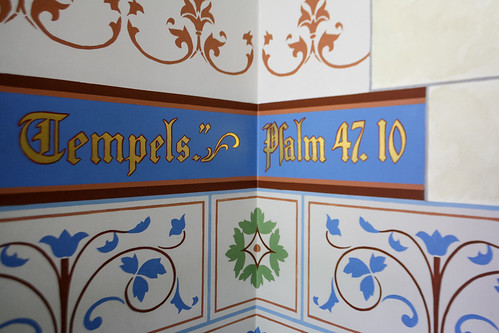
With its fully masonry exterior and verticality, the architecture of St Mary, High Hill is among the most stately and urbane of Texas' rural churches. The building design was the work of prominent San Antonio architect Leo M. J. Diehlmann. The number of buildings he designed for Catholic parishes and organizations—and the fact that his middle initials stand for Maria Joseph—reflect that Diehlmann and his family were involved and influential members of the Roman Catholic community in central Texas.
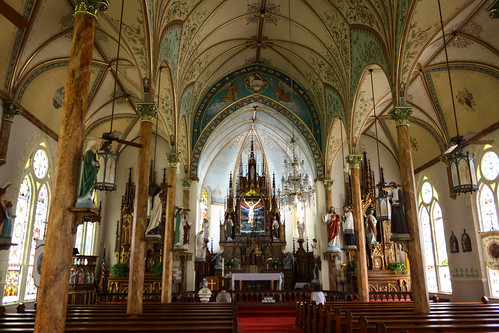
The variety of decorative painting techniques work together to completely cover the interior of the nave. The result is a hierarchy that reinforces the spatial articulation and culminates in the apsidal sanctuary. Here the lighting and painting coincide to provide a (relatively) unique but fitting image of the liturgical and theological reality taking place. Within the brightly lit apse (a space whose concavity and material illumination have been a signifier of heaven since the earliest Christian architecture) stands a highly contrasting dark altarpiece containing a stained glass crucifix. Thus our access to the inaccessible illuminating joy beyond occurs through the moment of darkest sorrow made present on the altar; and yet that dark moment also shines with the same light that is our terminal object.
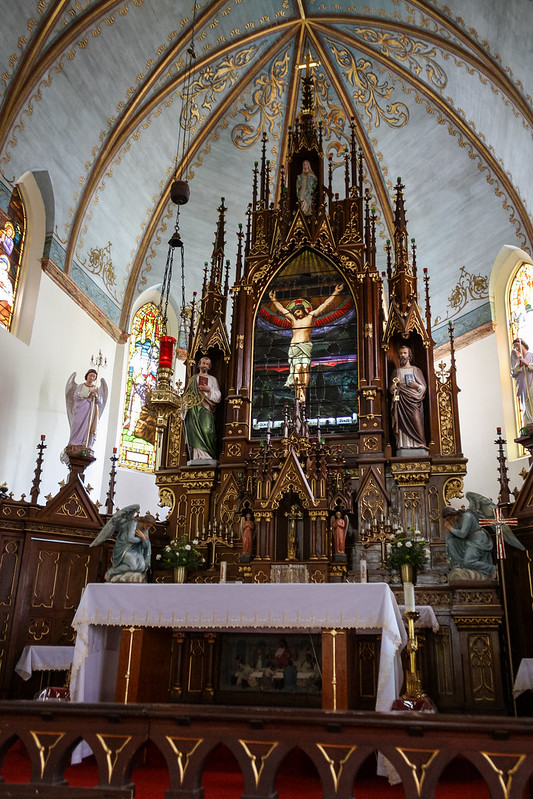
Among all of the Painted Churches, St Mary, High Hill has one of the highest degrees of integration between structure and painting and use. And this is despite the material dishonesty evident in the marbling effect on the columns and the faux masonry borders of the windows. (I suspect the latter may have been a more recent addition.)
The wooden pointed groin vault is itself a beautiful structural work. So it is fitting that here the decoration is the least superfluous. The gold of the ribs highlight the existing structural members; the freehand floral tracery underscores the dynamic rhythm of the aisle and nave vaults; the religious symbols in the bays tie the remaining figural program to the structure. (This is in contrast to the underside of the organ/choir loft which is more indicative of wood masquerading as stone and geometric patterns that merely mimic the two-dimensional perimeter lines.)

This church has been lovingly maintained over the years; however, it does appear that the painting has been modified in the process. One of the most fascinating aspects of visiting the church are the areas where the original painting remains uncovered.
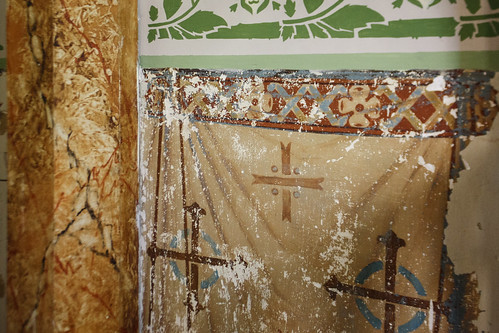
In all it is an impressive experience and a witness to the efficacy of not doing something timidly or half-way. The beauty of this church derives from the integration of what would otherwise be divided into "art" and "architecture." By addressing every surface, but each in a way that is keyed to its structural and liturgical hierarchy, the whole work comes together in a way that isolated art pieces placed in an uncoordinated structure will not.
The next installment in this series will explore Assumption of St Mary, Praha.
